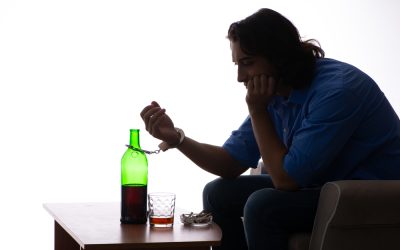Additionally, marijuana interferes with emotional regulation and coping skills developed during recovery, thus hindering progress. Additionally, anxiety increases as marijuana has sedative effects on the central nervous system, and withdrawal removes that calming influence. According to research from the National Institute on Drug Abuse (NIDA), approximately 30% of regular marijuana users experience withdrawal symptoms when attempting to quit, which include irritability, sleep disturbances, and cravings.
In addition, marijuana dependence has been linked with a lack of motivation. Someone who is addicted may lack the drive to engage in activities, pursue goals, or keep up with responsibilities, including school and work. Someone who is addicted to marijuana will prioritize their drug use over other aspects of their life. They will likely cut back on activities that previously brought them joy or withdraw from them altogether. Overcome addiction with our family support system, and regain control of your life!
What are some negative consequences of cannabis use disorder?
For someone to be considered addicted, he or she must meet at least two of the 11 criteria, which include an inability to reduce consumption, constant cravings, and relationship and social problems. Also known as Cannabis Use Disorder (CUD), addiction goes beyond physical dependence and includes psychological dependence. This means the person has a mental and emotional reliance on marijuana and may use it to cope with stress, anxiety, or other feelings, often prioritizing its use over other important responsibilities and interests. Cognitive behavioral therapy is one form of evidence-based therapy that focuses on teaching individuals how thoughts, emotions, and behaviors are interconnected. It helps teach various coping strategies and how to correct any problematic behaviors to enhance self-control, stop substance use, and address several other problems that commonly occur with substance use disorders.

Step 2- Seek Professional Assessment
It evaluates symptoms such as tolerance, withdrawal, and the impact of cannabis use on daily functioning. The clinician looks for signs of impairment in social, occupational, or other important areas due to cannabis use. Marijuana addiction is classified under the DSM-5 as a substance use disorder with varying severity levels based on the number of criteria met within 12 months. These criteria include loss of control over use, social impairments, tolerance, withdrawal symptoms, and continued use despite negative consequences. Behavioral therapy programs typically last from 12 to 24 weeks, but long-term support and maintenance therapy may continue for several years to prevent relapse.
Benefits of Choosing Drug-Free Marijuana Rehab
So, it’s important to be especially aware of the signs of marijuana addiction. There are resources and Sober living home treatment options available for those who are dealing with addiction. MET aims to enhance a person’s motivation to change their substance use behavior. This therapy involves exploring ambivalence regarding marijuana use and developing personalized goals for recovery. This shows that MET is an effective treatment option for marijuana addiction. Clinical evaluation is a comprehensive assessment conducted by a healthcare professional that includes a detailed patient history and mental status examination.
What Are the Signs of Marijuana Addiction?
- Therapists can alleviate the emotional factors contributing to marijuana use and addiction, using proven evidence-based methods (or holistic therapies) to treat disorders like anxiety, depression, and trauma.
- But whether you use it legally or illegally, it’s possible to misuse it and get addicted to it.
- As THC accumulates in the brain, regular use leads to long-term deficits in attention, memory, and learning.
Signs of marijuana addiction include behavioral, physical, and cognitive symptoms. Behavioral symptoms of marijuana addiction include intense cravings, neglect of responsibilities, and social isolation. Physical symptoms of marijuana addiction may involve bloodshot eyes, increased heart rate, and respiratory issues.

How does cannabis use impact adolescents?
Dispensaries sell products with up to 40% THC in smokable flower form and up to 80% in concentrated forms. These stronger forms produce stronger negative side effects and increase the risk of addiction. Beginning her career as a freelance writer, Grace graduated summa cum laude from Arizona State University with a B.A.
The presence of withdrawal symptoms—one of the hallmarks of addiction—has also been proven. Those withdrawing from pot experience symptoms like feelings of anger or aggression, irritability, anxiety, reduced appetite, restlessness, and sleep problems. Also, many rehab programs administer drugs like lithium, fluoxetine, buprenorphine, methadone, but drugs are not part of the Narconon program. In fact, the word Narconon means “No Drugs.” Instead, nutritional supplements are used https://ecosoberhouse.com/ and they help build back a person’s health.
Benefits of Long-Term Residential Marijuana Rehab
The long-term effects of marijuana addiction include persistent issues that have lasting impacts on an individual’s life. Persistent cognitive deficits, such as memory problems and impaired decision-making, continue even after ceasing marijuana use, affecting daily functioning and quality of life. Marijuana addiction also increases the risk of developing mental health disorders, such as depression, anxiety, and schizophrenia. Long-lasting changes in brain function why is weed so addictive affect decision-making and impulse control, leading to difficulties in personal and professional life. Psychiatric assessment evaluates co-occurring mental health conditions, such as anxiety or depression, that complicate marijuana addiction. This assessment aids in understanding how marijuana use interacts with other mental health issues, shaping treatment recommendations based on a comprehensive view of the individual’s psychological health.
This study will provide critical insights into risk and resilience factors for cannabis and other substance use to inform future prevention interventions. This condition can be diagnosed by a healthcare professional such as a medical doctor or psychologist. Treatment methods include psychotherapy (talk therapy) and medications. More specifically, motivational interviewing, contingency management, and cognitive behavioral therapy (CBT) may be used. Medications to control cravings may be used alongside nonmedicinal interventions.
How is cannabis use disorder treated?
- Providers who advertise with us must be verified by our Research Team and we clearly mark their status as advertisers.
- About 90 percent of the people who used drugs and their primary drug of choice wasn’t marijuana met the criteria for abuse, compared to 47 percent of primary marijuana users.
- Many people can use marijuana safely without becoming addicted or abusing it.
- These therapies help individuals address harmful behaviors and boost motivation to quit.
It involves both psychological and physical dependence where individuals develop tolerance, requiring increased amounts to achieve the desired effect, and experience difficulty controlling or stopping their usage. The common signs of marijuana addiction include persistent cravings, loss of control over usage, and continued use despite negative impacts on personal and professional life. Individuals experience withdrawal symptoms when attempting to quit, which vary in intensity based on the level of dependency.

Leave A Comment